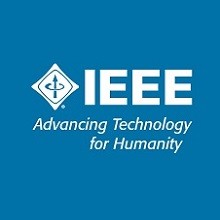
دانلود مقاله طراحی سیستم الکترونیکی کسب اطلاعات ترافیک با یادگیری عمیق و اینترنت اشیا
چکیده
مقدمه
II. مطالب مرتبط اخیر
III. طراحی سیستم جمع آوری اطلاعات ترافیک (IAS)
IV. ماژول شبکه DL
V. نتایج و بحث
VI. نتیجه گیری
منابع
Abstract
I. Introduction
II. Recent Related Work
III. Design of the Traffic Information Acquisition System (IAS)
IV. Network Module of the DL
V. Results and Discussion
VI. Conclusion
References
چکیده
در پیاده سازی سیستم هوشمند نظارت بر ترافیک (ITMS)، دسترسی به موقع و موثر به اطلاعات ترافیک جاده ای یک پیوند ضروری است. برای جمعآوری دادههای بیدرنگ و انتقال اطلاعات جمعآوریشده به پسزمینه برای پردازش، به یک سیستم اکتساب اطلاعات ترافیکی (IAS) نیاز دارد. بنابراین، این مقاله تشخیص اطلاعات خودروی جادهای را بر اساس یادگیری عمیق (DL) مورد مطالعه قرار میدهد. در ابتدا، چارچوبی از IAS ترافیک پیشنهاد شده است. سپس، یک مدل بهبود یافته MT-GooGleNet بر اساس شبکه عصبی کانولوشن (CNN) برای مکان یابی و شناسایی وسایل نقلیه در تصاویر ترافیک پیشنهاد شده است. در نهایت، عملکرد مدل با شبیهسازی تحلیل میشود. نتایج تجربی تشخیص موقعیت خودرو نشان میدهد که دقت طبقهبندی Multi-Task (MT)-GooGleNet پس از تنظیم دقیق 99.5٪ است. در مقایسه با سایر مدل ها، مدل MT-GooGleNet پیشنهادی بهترین در تشخیص موقعیت خودرو است و دقت موقعیت یابی آن بسیار بالاست. نتایج شناسایی خودرو نشان میدهد که پس از افزایش دادهها و پیشآموزش، دقت مجموعه تست مدل MT-GoGleNet 96/79 درصد است. نتایج نشان می دهد که دقت مدل پس از پردازش به طور چشمگیری بهبود یافته است. این تحقیق مرجعی برای ایجاد IAS در آینده فراهم می کند.
توجه! این متن ترجمه ماشینی بوده و توسط مترجمین ای ترجمه، ترجمه نشده است.
Abstract
In implementing the Intelligent Traffic Monitoring System (ITMS), timely and effective access to road traffic information is an essential link. It requires an effective traffic Information Acquisition System (IAS) to collect real-time data and transmit the collected information to the background for processing. Therefore, this paper studies on-road vehicle information recognition based on Deep Learning (DL). Firstly, a framework of traffic IAS is proposed. Then, an improved MT-GooGleNet model based on Convolutional Neural Network (CNN) is proposed to locate and recognize vehicles in traffic images. Finally, the performance of the model is analyzed by simulation. The experimental results of vehicle position recognition show that the classification accuracy of Multi-Task (MT)-GooGleNet after fine-tuning is 99.5%. Compared with other models, the MT-GooGleNet model proposed is the best in vehicle position recognition, and its positioning accuracy is very high. The results of vehicle identification show that after data enhancement and pre-training, the testing set accuracy of the MT-GooGleNet model is 79.96%. The results show that the model’s accuracy has been dramatically improved after processing. The research provides a reference for establishing IAS in the future.
Introduction
The last several decades have seen rapid socio-economic development and a much-improved quality of life in China, with which household car ownership and industrial vehicle volume have gained a substantial boost. Yet, such civil convenience has come at a cost, such as the stubborn traffic congestion and up-rising accidents. Therefore, there is an imminent demand for traffic congestion alleviation and transportation resource distribution using modern technological means. Under such circumstances, the ubiquitous Internet of Things (IoT) and maturing Artificial Intelligence (AI) technologies might help devise an intelligent urban traffic monitoring and information management system for the well-being of residents [1], [2].
Arguably, for a robust and viable Intelligent Traffic Monitoring System (ITMS), timely and data acquisition efficiency should be the utmost concern. Overall transformational data can cover vehicle speed, traffic flow, road occupancy rate, and vehicle type. Every link matters for timely and effective data collection, transmission, processing, and forecast [3]–[4][5]. The first link will be traffic data collection, against which multiple models and systems are available. In particular, real-time traffic information is a prominent and comprehensive traffic situation indicator, which is relatively easier to collect and against which many ready-made video detection tools have been invented. Compared with other traditional detection methods, the video detection approach features intuitive traffic scenes and an excellent corner-cover detection range. Thus, vehicle-oriented Image Recognition (IR) and Video Analysis (VA) technology can effectively realize real-time vehicle tracking and management [6]. On the other hand, the Convolution Neural Network (CNN) is a Deep Learning (DL)-based common image processing feedforward Neural Network (NN) structure with an outstanding local connection and weight sharing mechanism [7], [8]. In a CNN, neurons are organized in some way to respond to overlapping vision domains.
Conclusion
Vehicle information acquisition from complex scenes is extremely difficult. Accordingly, the present work aims to collect comprehensive vehicle on-road driving information. Consequently, an MT-GooGleNet model is proposed to locate and recognize vehicles in images. Firstly, the experimental results of vehicle location and recognition show that the MT-GooGleNet model proposed has the best effect and high positioning accuracy in vehicle location and recognition compared with other literature methods. Secondly, the experimental results of the fine-tuned MT GooGleNet model are significantly better than the fully trained model, indicating that the initialization of parameters has a significant impact on the training results. Thirdly, the results of vehicle identification show that after data enhancement and pre0training, the testing set accuracy of the MT-GooGleNet model is 79.96%. Therefore, the accuracy of the MT-GooGleMet model has been greatly improved after processing. The research findings provide a reference for establishing IAS in the future. The guiding principles of the research are comprehensive data collection and accurate model construction. However, the research has some deficiencies, mainly because the experimental data set used has a single source. The dataset does not contain enough image types, which is also the main limitation affected by the experimental environment.
